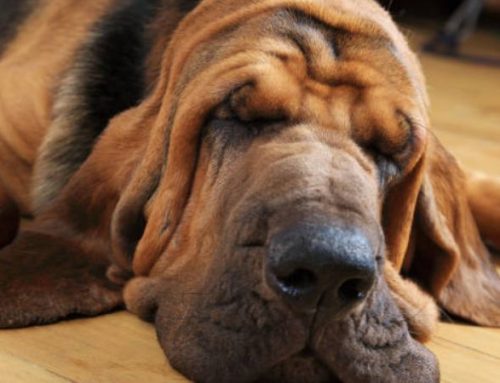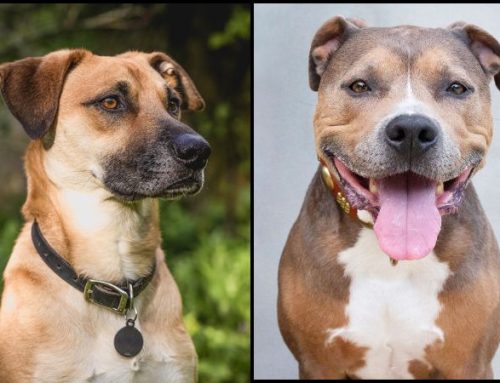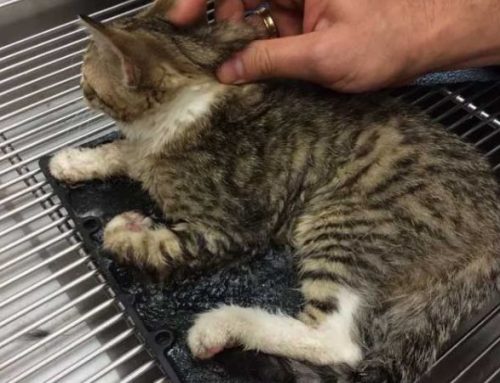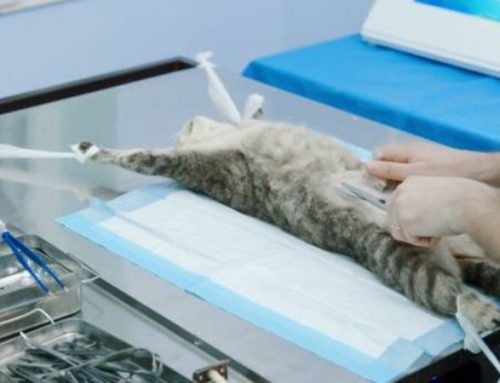It’s never easy seeing your dog in discomfort especially when it affects their eyes. Redness, swelling, or excessive tearing can make even the happiest pup seem a little off. And while they might still wag their tail, eye problems are often a sign that something’s wrong.
In this guide, Nexus-Pets will show you how to recognize the signs of swollen eyes in dogs, understand what’s causing them, and take simple steps to treat the issue at home so your furry friend can get back to feeling their best.
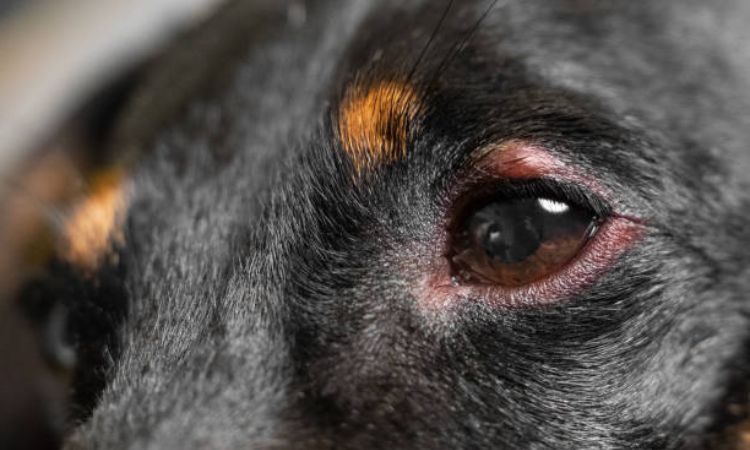
Common Causes of Swollen Eyes in Dogs
Swollen eyes in dogs can be alarming, but understanding the underlying causes can help you respond quickly and appropriately. There are several common reasons why your dog’s eyes may appear red, puffy, or irritated, ranging from mild irritations to more serious health concerns.
Common Causes of Swollen Eyes in Dogs:
- Allergies: Dogs can develop allergies to environmental factors like pollen, dust mites, mold, or even certain foods. These allergies often cause redness, swelling, and excessive tearing in the eyes.
- Infections: Bacterial, viral, or fungal infections such as conjunctivitis (commonly known as pink eye) can lead to eye inflammation and discharge.
- Injury or Trauma: A scratch, blow, or foreign object (like dust, grass seeds, or debris) can irritate or damage the eye, resulting in swelling and discomfort.
- Blocked Tear Ducts: When tear ducts are blocked or infected, tears may accumulate and cause swelling around the eye area.
- Glaucoma: This serious condition involves increased pressure inside the eye and may cause bulging, cloudiness, and pain. It requires immediate veterinary attention.
- Dry Eye (Keratoconjunctivitis Sicca): Insufficient tear production can lead to dry, irritated, and swollen eyes, often accompanied by thick discharge.
- Eyelid Abnormalities: Conditions like entropion (inward-turning eyelids) or ectropion (outward-turning eyelids) can cause chronic irritation and swelling.
- Tumors or Growths: Though less common, lumps or tumors around the eye socket can cause swelling and should be evaluated by a vet.
If your dog is showing signs of swollen eyes, it’s important to observe closely and consult a veterinarian to determine the cause and begin the appropriate treatment. Prompt care can make all the difference in protecting your dog’s vision and comfort.

Symptoms to Watch For
- Redness and inflammation around the eye
- Swelling of the eyelid or eyeball
- Abnormal discharge (color and consistency)
- Excessive tearing or watery eyes
- Squinting or keeping the eye closed
- Pawing or rubbing at the eye or face
- Changes in behavior, mood, or appetite
Immediate Home Care for a Swollen Dog Eye (With Vet Approval)
If your dog’s eye appears swollen, red, or irritated, it’s essential to act quickly and calmly. With your veterinarian’s approval, you can provide some safe and gentle care at home to ease your dog’s discomfort and possibly prevent further injury. However, home remedies should never replace professional veterinary treatment—especially when dealing with eye issues. Here are steps you can take immediately:
Step-by-Step Home Care
- Gently flush the eye using lukewarm sterile saline solution or a homemade saltwater rinse (1 teaspoon of salt dissolved in 500 ml of boiled and cooled water). This helps remove irritants like dust, pollen, or minor debris.
- Apply a clean compress:
- Use a cool compress (for swelling or irritation caused by trauma or allergies) or a warm compress (for minor infections or blocked tear ducts).
- Soak a soft cloth in the appropriate temperature water, wring it out, and gently place it over the closed eye for a few minutes.
- Prevent rubbing or scratching:
- If your dog is pawing at their eye or rubbing their face against surfaces, use an Elizabethan collar (E-collar) to avoid further damage or infection.
- Avoid human eye drops or medications:
- Do not use any over-the-counter or human eye products unless explicitly prescribed by your vet. Some substances can worsen the condition or harm your dog’s vision.
- Monitor the symptoms closely:
- Watch for signs of worsening: increased redness, excessive discharge, squinting, changes in eye color, or behavioral signs like lethargy or loss of appetite.
- If symptoms persist for more than 24 hours or worsen at any point, contact your vet immediately.
When to Seek Immediate Veterinary Care
Even if the swelling seems minor, eye injuries or infections can deteriorate quickly. Prompt professional attention can help avoid long-term damage or loss of vision. Never delay a vet visit if you notice:
- Pus-like discharge
- Cloudiness or color changes in the eye
- Squinting or holding the eye shut
- Signs of pain or anxiety in your dog
Note: Always consult with your veterinarian before beginning any home treatment for eye conditions. Your vet may recommend specific medicated drops, ointments, or further testing depending on the cause.
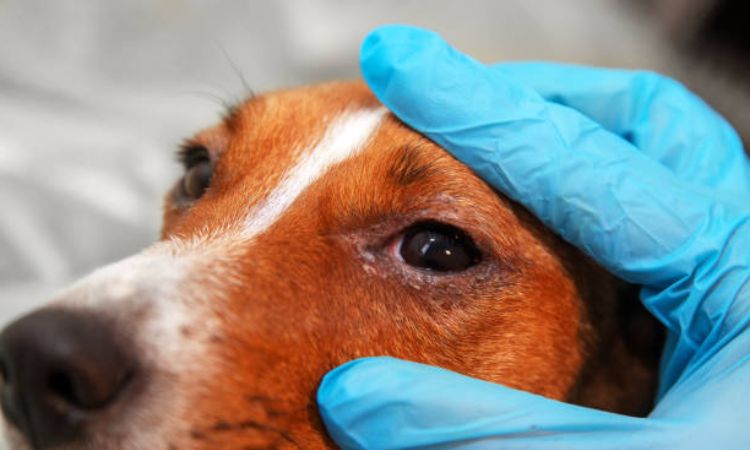
Preventive Tips to Protect Your Dog’s Eyes
1. Avoid Exposure to Irritants and Allergens
- Limit environmental triggers: Keep your dog away from smoke, dust, pollen, household cleaners, and other airborne irritants.
- Use hypoallergenic products: Choose gentle, dog-safe shampoos and grooming supplies.
- Protective gear when outdoors: Consider dog goggles or eyewear during activities like motorbike rides, windy walks, or hiking to protect against wind, dirt, and UV rays.
2. Maintain Regular Grooming and Eye Cleaning
- Routine cleaning: Use a soft, damp cloth or vet-approved wipes to clean around the eyes and remove discharge or debris.
- Hair management: Trim hair around the eyes, especially for long-haired breeds, to prevent fur from irritating the cornea or obstructing vision.
- Avoid matting: Ensure tear stains and crusty build-up are cleaned regularly to prevent infection.
3. Prompt Attention to Minor Irritations
- Monitor early signs: Look for symptoms such as redness, tearing, swelling, or pawing at the eye.
- Rinse gently: Use lukewarm saline solution for minor irritation only if approved by your vet.
- Avoid self-medicating: Never apply human or non-prescribed eye drops without veterinary guidance.
4. Provide a Safe Play and Living Environment
- Remove hazards: Eliminate sharp furniture corners, thorny plants, and other objects that could cause accidental eye injuries.
- Monitor play: Supervise rough play with other pets, especially those with claws.
- Trim nails: Keep your dog’s nails short to prevent accidental scratches during grooming or play.
5. Support Eye Health with Proper Nutrition
- Balanced diet: Ensure your dog receives nutrients like vitamin A, omega-3 fatty acids, and antioxidants for eye health.
- Supplements: Consult your vet about safe supplements for eye support if your dog is at risk of age-related eye issues.
6. Schedule Routine Veterinary Eye Exams
- Early detection: Regular checkups can help detect conditions like dry eye, glaucoma, conjunctivitis, or corneal ulcers.
- Breed-specific risks: Some breeds (e.g., Pugs, Bulldogs, Shih Tzus) are more prone to eye problems—more frequent monitoring may be needed.
- Post-care follow-up: After any eye issue, follow-up vet visits help ensure healing and prevent recurrence.
Swollen eyes in dogs can be worrying, but quick action makes all the difference. Spotting symptoms early, providing gentle home care, and seeking timely vet advice help your pup heal faster and avoid complications. With regular grooming and a safe environment, you can also prevent future eye issues and keep those bright eyes healthy.


